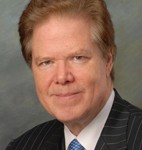Minow: In that Oxford University Press is a publisher with a mission to expand access to academic knowledge, it has taken a particularly nuanced approach to the Google Books settlement proposal. Could you describe the issues that tipped you to supporting the settlement?
Barton: I would break this into two parts–substantively what inclined us to support the settlement; and what prompted us to voice our support publicly, at the point that we did so.
The settlement was not an easy document to understand, and it took a group of us, working for some months, to form a considered view of it. When we did understand it, what made it in the end straightforward for us to support the settlement was the almost unimaginable access that it will enable to millions of works that were lost to readers and scholars and which, without the settlement, were likely to remain so. We had been working on a project at OUP to bring our own out-of-print books back to life, and we were aware of the very considerable difficulties and costs involved in doing so. From these efforts at digitizing our backlist, we saw that only an entity such as Google would take on the risks and make the investments needed to bring these millions of books back to life. This is because Google wants to make its search engine as useful as possible, in order to secure advertising revenues, and so it can justify the major costs: publishers cannot make anything like the same level of return on selling their out-of-print backlist as Google can in securing revenues as a result of returning the best quality searches. At Oxford it was our mission–one of supporting and disseminating scholarship and education, rather than securing a commercial return–which was the primary driver in our plan to develop a backlist archive. Many other publishers do not have that same mission, and among those who do, few could afford the substantial investment of time and money required.
So the settlement’s promise of enabling students, scholars and readers access to these millions of works is the primary issue that tipped OUP into supporting the settlement.
Of course there are elements of the settlement about which we are less positive, and I think it would have been (and would still be) helpful if those who negotiated the settlement were to come out in advance of the court date with some changes to address sensible reservations which have been expressed.
We decided that we should publicly voice our support for a number of reasons, including what I view as poor branding of this settlement as “the Google settlement.” It is not surprising that the public has been especially cautious–skeptical even–in considering something that sounds as if it is just for the benefit of a company as powerful as Google. But this isn’t just Google’s settlement; Google is a party to the settlement, for sure, but it is equally a settlement which is in the interests of publishers, authors, libraries, and, I believe, the general public. We also felt that while the groups that had negotiated the settlement had done a remarkable job in negotiating it, they were falling short in explaining and promoting it. Those who had negotiated the deal didn’t seem to be coming forward to correct misunderstandings and support it. I can appreciate that, after having slogged through two and a half years of negotiation, they must have relished the prospect of putting it to the side even for a short while. But the vacuum created was filled by outspoken critics, some of whom seemed to have vested interests in scuttling the settlement. Underlying a growing chorus of criticism, we heard repeated misunderstandings about the settlement, as well as a visceral fear of something that seemed to be for Google. But, as I mention above, the settlement was negotiated by authors, publishers and libraries too, and it promises tangible and significant benefits for these groups as well.
I’m not one who eagerly sticks his head above the parapet, but I was quite concerned that, if people did not step forward to voice support for the settlement, it might fail. And that would serve no one except Google’s competitors. Hence, my article in The Chronicle of Higher Education.
Minow: You wrote that making orphan works “available again is a clear public good. Google’s having exclusive rights to use them, as enshrined in the current settlement, however, is not.” Is the Justice Dept right to be investigating antitrust issues?
Barton: I don’t profess to have special antitrust expertise, so I can’t say whether in fact there is a genuine antitrust issue here. But it certainly makes sense that the antitrust authorities should, as they are doing, at least explore whether there is any basis to the antitrust concerns that have been voiced.
That said, I don’t share the concerns that I’ve heard about how the institutional database’s subscription prices will be set. For one thing, the settlement contains many checks and balances, including:
- the overarching dual pricing objectives stated in the settlement (the realization of both market-rate revenue and broad public access to the books in the database)
- pricing which is based on “full time equivalents” (FTEs)
- and an arbitration provision if the parties can’t agree on pricing.
Also, price-gouging is unlikely because of the significant amount of free access enshrined in the settlement: the full database will be available for free to anyone who walks into a public library in the U.S. or who is associated with a U.S. higher education institution, and a significant portion of each work also will be available for free through so-called “Preview Use” to anyone in the U.S. with internet access. With so much free access to this database, what leverage might Google and/or publishers have to charge exorbitant prices? I also view the settlement as offering pro-competitive effects, since it provides authors, publishers and readers with another important route to market. Finally, the significant public debate and the continuing role of the court in overseeing the settlement are both antidotes to any misbehavior.
It is also noteworthy that Google will not be able to use its position to bully publishers into improving the split of revenues from selling works in the settlement: these are helpfully laid out in the document (although I am still uncertain about what the ongoing costs of running the Book Rights Registry are likely to be–an important question for a publisher, given that authors and publishers will pay for these ongoing costs out of their 63% share of the revenue split). So even if one concludes that the settlement gives Google monopoly power in relation to titles in the settlement, the settlement also ensures that Google isn’t able to exploit that position unfairly, whether in relation to readers, authors, librarians, or publishers.
I have also heard antitrust concerns about Google’s exclusive right to use the orphan works they’ve scanned. I do have concerns about orphan works and the settlement, though my concerns aren’t antitrust-related. (In fact, it may even be that, by going out first, Google has cleared a path for others who might be interested in digitizing and offering these works. The risks are certainly now more clear.) But an imperfection I see relating to orphan works is that, at least immediately following the settlement, Google alone has the ability to exploit orphan works, when even the original publishers of these works will share no such right. As I understand it, this is a byproduct of the fact that this is the settlement of a class action and can be addressed only by Congress passing orphan works legislation. I do think that Google should publicly commit itself to supporting this legislation. And I also think that Google should make its database of information about public domain and orphan works publicly available, so other would-be users of this material will have a better sense of the risks they might face.
I also think that Google should drop the “most favored nations” clause in the agreement.
Barbara Cohen: I agree, if only because the MFN’s meaning seems almost uniformly to be misunderstood. I keep reading concerns expressed by people who mistakenly read the MFN as broadly prohibiting the Book Rights Registry from giving any firm other than Google a better deal in any respect than Google has with respect to exploiting any of the books in the database. But in fact the MFN is an extremely narrow clause and is being misread. Only if, during the next 10 years, there is another class action and settlement involving a “significant amount” of the orphan works in the Google database could this clause be invoked. But, narrow though the MFN is, I agree with Tim that Google should eliminate it, if only to ease public concerns. The mere presence of this clause has been read by many as showing Google’s monopolistic desires and this has cast a long shadow. It would be a shame if fears based on a misunderstood clause came to overshadow the settlement’s remarkable potential to do good. If there are steps that Google and the other parties can take now to eliminate these concerns and ensure the settlement’s approval, I hope that they do so.
Minow: Critics say that the non-representativeness of the class is one ground on which it is possible to object to the proposed Book Search settlement. What do you think?
Cohen: My understanding is that the judge will accept or reject the settlement based on whether or not it’s deemed fair to the class, and it’s unclear to me whether the question of the representativeness of the class will weigh into this decision. (If the lawsuit had been litigated, then the representativeness of the class certainly would have been a key issue.)
Barton: As I think about how much choice rightsholders will have to decide whether and how their works may be used, I have trouble seeing what the risks might be in any case. And as I weigh the particular concerns of various rightsholders, my sense is that overall those at the negotiating table did a good job of addressing those concerns that can be addressed by the settlement.
Certainly as far as small publishers and university presses go, the settlement will be a boon (though I acknowledge that there are some university presses who hold a different view). Many small presses do not have the resources that would be needed for them to digitize their own backlists. But now they will have a means to accomplish that goal, via the settlement. Some presses will decide to develop their own digitization projects – there are quality issues relating to including titles in the settlement (scanning quality; limited metatdata; issues about inserts and other material not included in the settlement or excluded from the settlement database; and so on). And those of us who wish to pursue our own backlist projects are free to do so–in addition to, or instead of, including our books in the Google database. Also, the settlement’s promise of disseminating research and scholarship fits squarely within a university press’s mission. University press representation on the Book Rights Registry would ensure that, over time, this group’s interests continue to be protected–a genuine concern, given that scholarly works will make up such a significant portion of the settlement database.
The interests of libraries, too, seem to have been well represented–no surprise, as they were involved in the Google Library Project from the start and were at the negotiating table. As the ALA and other library associations have recognized, the settlement’s potential to provide unprecedented public access to millions of books also advances the libraries’ core mission of providing patrons with access to information.
Authors’ interests generally are so well protected by the Author-Publisher procedures in the settlement that some worry that authors’ interests have actually been expanded beyond their publishing contracts. But, with the total choice offered by the settlement, this doesn’t seem to me a real concern.
I am aware that, while voicing support for the settlement, some academic authors have expressed concerns that privacy and academic freedom principles and open access issues were inadequately addressed–concerns that I trust will be addressed by Google and the Book Rights Registry to the extent that these issues are products of the settlement.
Some of the concerns that I’ve heard academic authors and others raise don’t seem to be products of the settlement itself, and wouldn’t be solved if the settlement is scuttled. For example, with or without a settlement, we should all be concerned about and seek to address privacy issues, as author James Gleick noted at a recent forum on the settlement.
That said, privacy is one of a number of issues which I think Google ought to have addressed in the run up to the Court’s “opt out” date. I have been disappointed not to have had a meaningful statement from Google which would put to rest the privacy concerns relating to the settlement. Earlier I mentioned that strong support for orphan works should also be forthcoming; I’d like to hear Google’s plans and commitments in both of these areas. There has been a great deal of misunderstanding and misinformation about the settlement; but there has also been some very informed criticism. Most of the latter focuses on issues relating to Google, rather than to the other parties, and I think Google should have engaged more with these sensible reservations before the court date, revising aspects of the settlement, as appropriate. Some aspects of the settlement are obviously part of a careful balancing act, to make sure all parties feel able to support it. But some are not, and Google would increase confidence in its likely approach to issues that will come up about the settlement over the coming years if it were now to address some of the current concerns.
Cohen: What’s most striking to me isn’t the different interests that these academic authors have highlighted, but, rather, our shared interests. In a letter to the court written by a group of academic authors, who were requesting an extension of the deadline for “opting out” of the settlement, they highlighted that the court’s approval of the settlement will unquestionably bring about a significant expansion of access to knowledge–and share knowledge for the sake of the general public. In other words, as with university presses and libraries, academic authors also applaud the alignment of the settlement’s broad aim of public access to knowledge with their own scholarly mission.
Barton: On this point–which I view as the most significant aspect of the settlement–we all seem to be in perfect alignment.
Finally, it is also worth considering what happens if the settlement fails. The settlement offers us a vision of a world where all Americans have access–for free–via c. 20,000 public libraries and higher education institutions–to millions of works which are not now available. They would also have substantial free access to those same titles from every (online) computer in the country. Consumers could also purchase these titles (for what I believe will be a reasonable price), and institutions can subscribe to them (again for what I believe will be a reasonable price). The alternative is access to snippets, at most.
The availability of a book used to be determined either by whether a publisher could justify a print run, or by access to the specialized collections of a relatively small number of libraries. Printing technology and cost structures meant that books were put out of print long before their useful lives were over. We now live in a time when technology and the different commercial dynamics around internet search have combined to give us an unprecedented opportunity to make available again the ideas and work of millions of such books written by generations of scholars and writers. Why wouldn’t we grasp that opportunity?
————-
Learn More
Useful list of links:
Google Book Search Settlement Agreement – A Perspective from Stanford University Libraries by Mimi Calter
Google Book Settlement http://www.googlebooksettlement.com/
When the Invisible is Made Visible: Oxford University Press on the Google Book Settlement By Tim Barton, President of Oxford University Press, Inc.(OUP-USA) http://www.oup.com/us/brochure/OUP_Inc_Google_Book_Settlement/
American Library Association Google Book Settlement http://wo.ala.org/gbs/
*Tim Barton is President, Oxford University Press, Inc.; Barbara Cohen is General Counsel, Oxford University Press, Inc.; Mary Minow is Content Editor, Stanford Copyright & Fair Use Center











